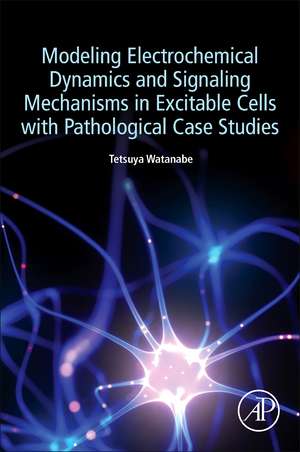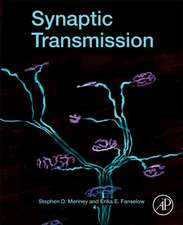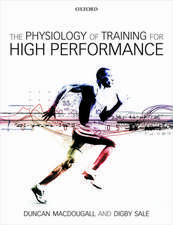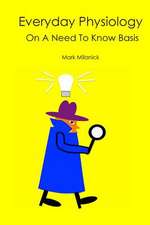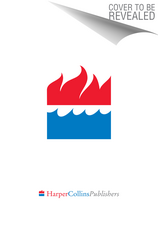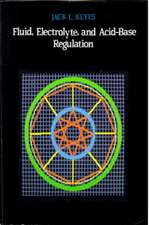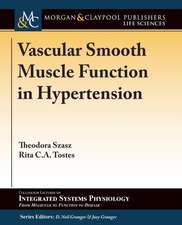Modeling Electrochemical Dynamics and Signaling Mechanisms in Excitable Cells with Pathological Case Studies
Autor Tetsuya Watanabeen Limba Engleză Paperback – 20 ian 2022
- Covers neuronal cell communication systems in excitable cells
- Presents new findings in biotechnology that are being applied in medicine and pathological cases
- Covers mathematical and physical bases for readers without background in these fields
Preț: 697.11 lei
Preț vechi: 733.79 lei
-5% Nou
Puncte Express: 1046
Preț estimativ în valută:
133.41€ • 144.86$ • 112.06£
133.41€ • 144.86$ • 112.06£
Carte tipărită la comandă
Livrare economică 15-29 aprilie
Preluare comenzi: 021 569.72.76
Specificații
ISBN-13: 9780323988032
ISBN-10: 0323988032
Pagini: 244
Dimensiuni: 152 x 229 mm
Greutate: 0.34 kg
Editura: ELSEVIER SCIENCE
ISBN-10: 0323988032
Pagini: 244
Dimensiuni: 152 x 229 mm
Greutate: 0.34 kg
Editura: ELSEVIER SCIENCE
Public țintă
Physiological scientists, Pharmaceutical scientists, Medical doctors, Biologists and PhysicistsGraduate and undergraduate students
Cuprins
1. Introduction
2. Statistical Dynamics and Diffusion of Small Molecules
3. Function of Membrane and Protein Synthesis in the Cell
4. Redox Reactions and ATP Synthesis in the Cell
5. Resting Electric Potential and Ionic Currents in the Cell
6. Electrochemical Conduction in Neurons and Neuronal Communications
7. Electrochemical Signaling Mechanism in Cardiac Muscle
8. Mechanism of Muscle Contraction and Disorder
9. Gas Exchange and Respiratory Insufficiency
10. Electrochemical Mechanism of Arrhythmias and Antiarrhythmic Drugs
2. Statistical Dynamics and Diffusion of Small Molecules
3. Function of Membrane and Protein Synthesis in the Cell
4. Redox Reactions and ATP Synthesis in the Cell
5. Resting Electric Potential and Ionic Currents in the Cell
6. Electrochemical Conduction in Neurons and Neuronal Communications
7. Electrochemical Signaling Mechanism in Cardiac Muscle
8. Mechanism of Muscle Contraction and Disorder
9. Gas Exchange and Respiratory Insufficiency
10. Electrochemical Mechanism of Arrhythmias and Antiarrhythmic Drugs
